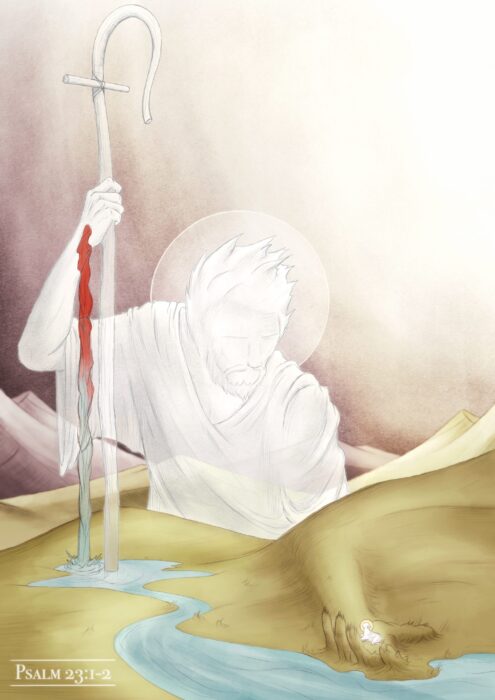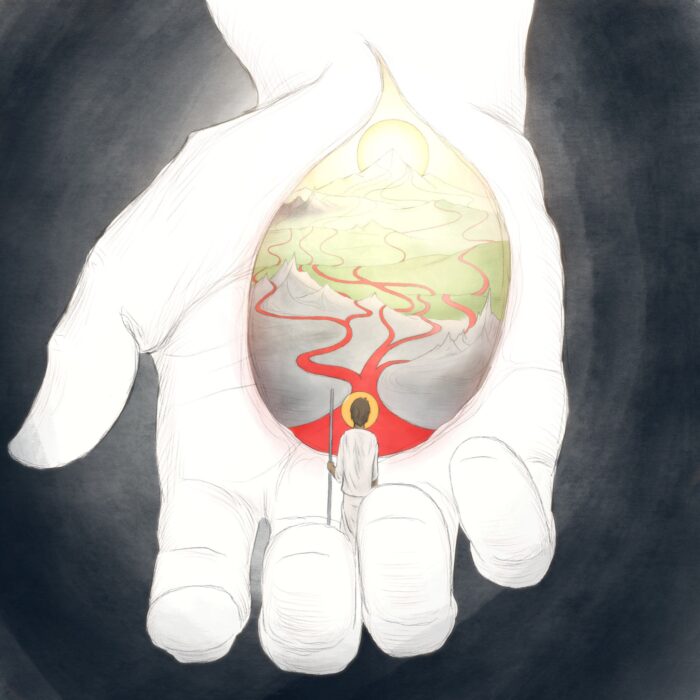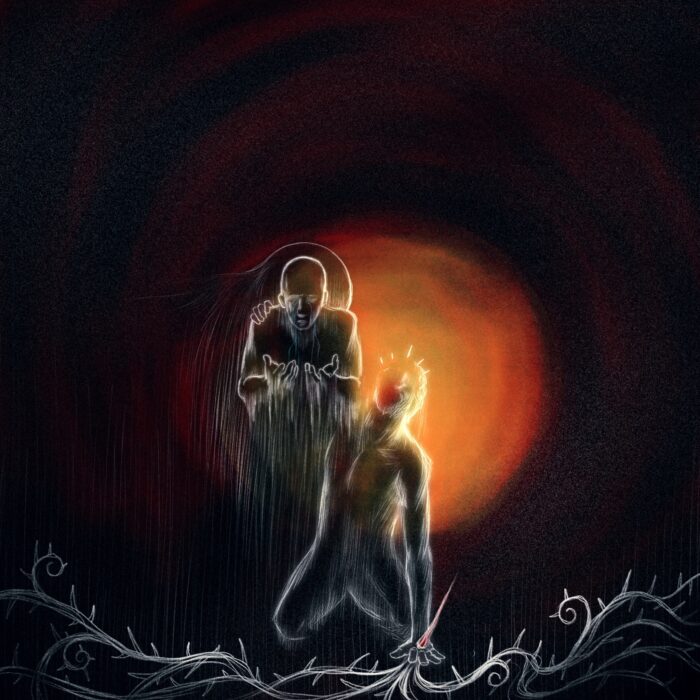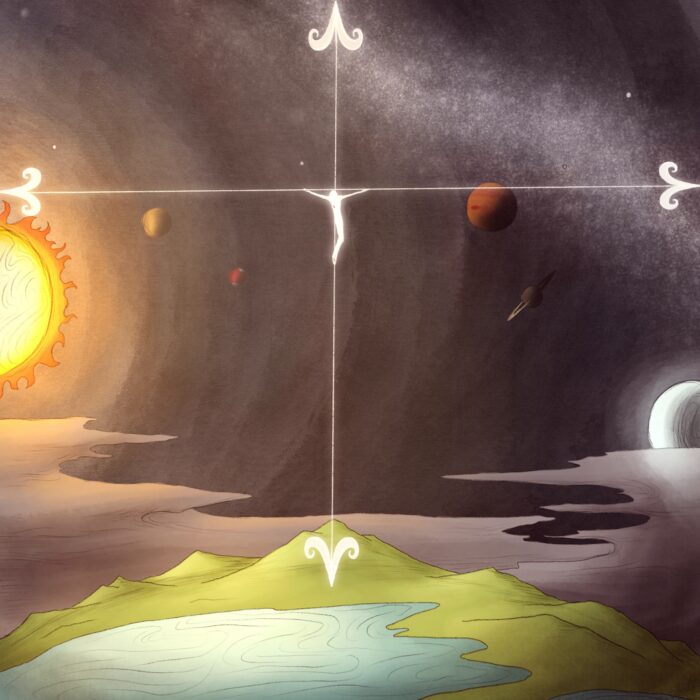The Lord is my shepherd; I shall not want.
He makes me lie down in green pastures.
He leads me beside still waters
– Psalm 23:1-2
Psalm 23 is perhaps one of the best loved passages in the entire Bible, and yet it’s important for the post-Calvary reader to recognize that the green pastures and still waters beside which the Lord leads His sheep were purchased by the outpouring of His own life on the cross. Only because the Good Shepherd lays down His life for the sheep is He also able to gather them into one flock and preserve them for Himself until the end (John 10:15-16,27-29). In this sense the joy of Psalm 23 springs up from the soil of agony found in Psalm 22, and the cries of “My God, my God, why have you forsaken me?” Ought to linger behind every recitation of “He restores my soul…” It’s important to keep this gospel-shaped context in mind as we read the well-loved stanzas of Psalm 23
Because of this, I wanted the visual representation of Psalm 23:1-2 to be grounded in the cross-work of the Good Shepherd. In these two verses it seems that the intimate, almighty sufficiency of the divine shepherd is primarily communicated to the sheep through the still waters by which He leads them and green pastures in which He causes them to rest. However, these two elements (the water and the grass) are not only for comfort, they also serve as sustenance to the sheep; the sheep of the Lord feed and drink on this water and grass. This is interesting because what is the food and drink of the believing soul except for Christ Himself (John 6:35, 55). The crucified and risen Jesus Christ is the water for which the human soul was made to thirst and He Himself is the food for which our hearts are hungering. He–slain for our sins, raised for our justification–is the food and drink of His people.
Because of this I represented the “still waters” as cascading from the wound in Christ’s hand (which is figuratively “crucified” on the cross/shepherd’s crook). And the “green pastures” are represented as the guarding hand of Christ Himself (which allows the imagery to perform the dual task of showing Jesus to be the “food” of His people as well as evoking His promise in John 10:28 to preserve His flock in His hand). The sheep of the Good Shepherd drink from the still waters of Life because His hands were pierced in their place, and they eat True Food of heaven because His body was broken for them on the cross. And now this Shepherd–who has passed through death and into life–leads them with sovereign and intimate authority through pasture and valley into glory.




